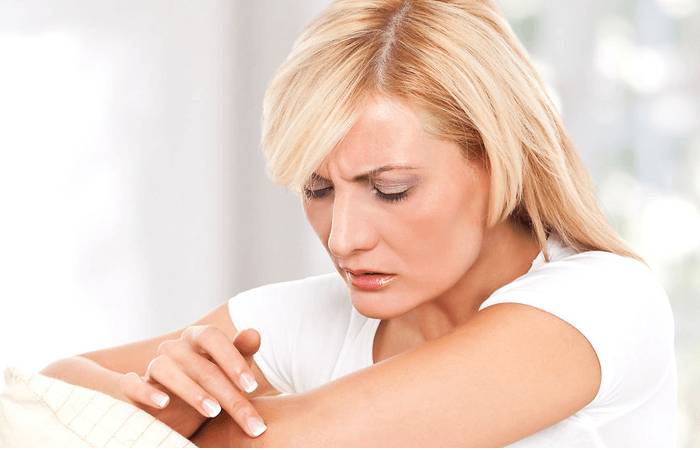Dry skin in winter it occurs when the skin does not retain enough moisture, for example, due to frequent bathing, harsh soaps, ageing, or certain medical conditions. Winter poses a particular problem because the humidity is low both outside and inside, and the water content of the epidermis (the outermost layer of the skin) tends to reflect the humidity level in its surroundings. Fortunately, you can do many simple and inexpensive things to relieve dry skin in winter , also known as winter itch or winter xerosis.
Keep Moisture In the Skin
Think of epidermal skin cells as an arrangement of tiles held together by a lipid-rich “glue” that keeps skin cells flat, smooth and in place. (See “Skin Anatomy”.) Water loss is accelerated when the adhesive loosens due to sun damage, excessive cleaning, scrubbing, underlying medical conditions, or the drying effects of low winter humidity and internal heat. The result is roughness, scaling, itching, cracking and sometimes a burning sensation.

The skin has three layers, each with a different function. The bottom or innermost layer consists of subcutaneous fat, which provides insulation, energy storage, and shock absorption. Above this is the dermis, which contains blood vessels, nerves, sweat and oil glands, and hair follicles. Finally, the top layer is the epidermis, the skin’s main protective barrier and the level at which drying occurs. The youngest living cells rise from the bottom of the epidermis and eventually die and, upon reaching the surface, fall to form stacked layers of cells in constant transition. This continuous cycle completely renews the skin approximately once a month.
Ageing And Dry Skin in Winter
Dry skin becomes much more familiar with age; At least 75% of people over the age of 64 have dry skin. It’s often the cumulative effect of sun exposure: sun damage results in thinner skin that doesn’t retain moisture. The production of usual oils in the skin also decelerates with age. In women, this may be partly the result of a postmenopausal decline in hormones that stimulate the sebaceous and sweat glands. As a result, the most vulnerable areas are those with oil (or sebaceous) glands, such as the arms, legs, hands, and mid-back.

Also, dry skin in winter is not usually a serious health problem. Still, it can lead to severe complications, such as chronic eczema (red patches) or bleeding from cracks deep enough to disrupt the capillaries in the dermis. Another possible complication is a secondary bacterial infection (redness, swelling, and pus) that may require antibiotics. (Rarely, dry skin is associated with allergies.) See your doctor if you sign any of these symptoms or if home remedies do not provide relief. Your doctor may prescribe a cream containing lactic acid, urea, or corticosteroids for severely dry skin. You may also want to do some tests to rule out medical conditions that can cause dry skin, such as hypothyroidism, diabetes, lymphoma, kidney disease, liver disease, psoriasis, and atopic dermatitis.
What Can You Do?

Here are some ways to fight dry skin that are effective when applied consistently:
Use moisturizer in winter. Please set it to about 60%, a level that should be enough to regenerate the top layer of your epidermis.
Limit yourself to one bath or shower for 5 to 10 minutes daily. If you shower more than that, it can remove widely of the skin’s oily layer and the reason it to lose moisture.
Use warm water instead of hot water, which can remove natural oils.
Minimize your soap usage; choose moisturizing preparations like Dove, Olay, and Basis if needed, or consider soap-free cleansers like Cetaphil, Oilatum-AD, and Aquanil.
Stay away from deodorant soaps, scented soaps, and alcoholic products that can strip away natural oils.
Bath oils can help, but use them sparingly – they can make the tub slippery.

